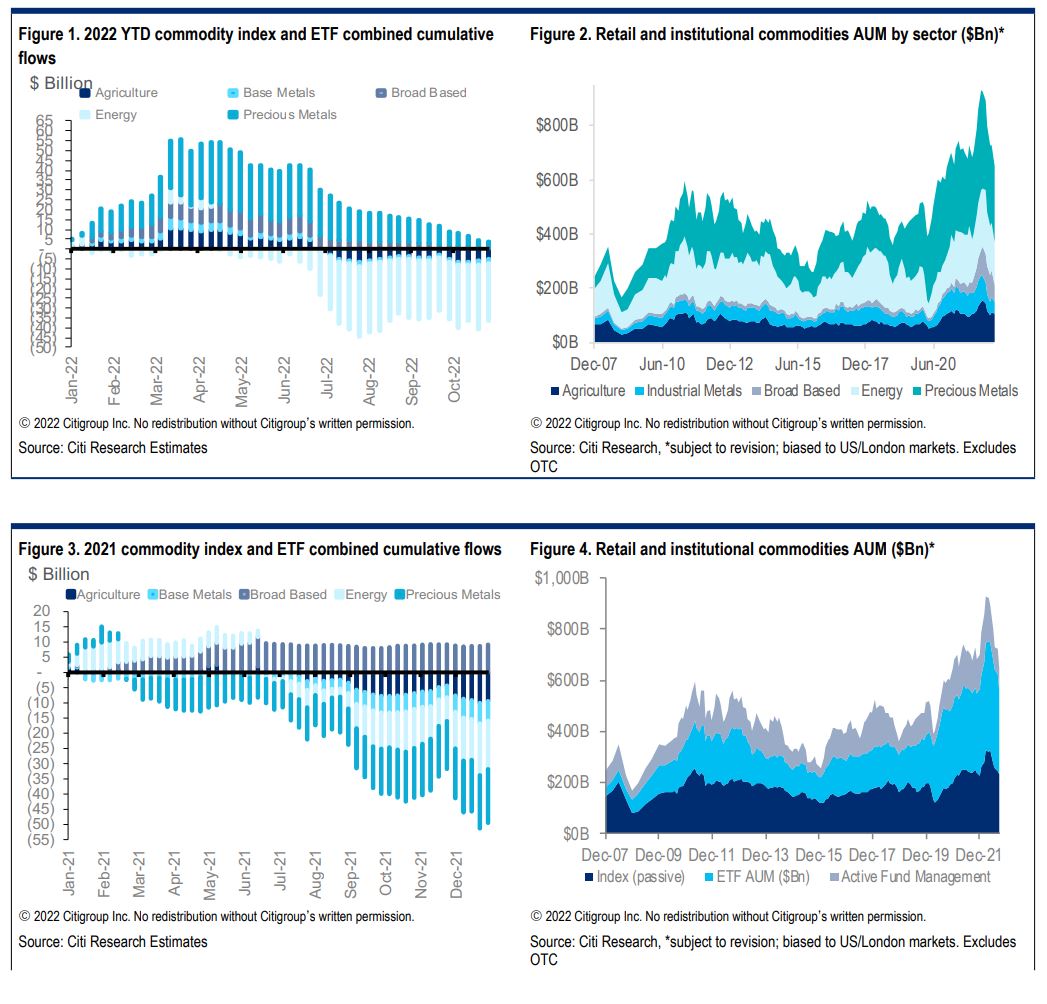We’ve had the first leg but another is ahead in the base case of a global recession. Citi makes some excellent points that accord very well with my experience.
As central banks across the world seek to tame inflation by raising interest rates, they inevitably increase the risk of growth slowdown and macroeconomic recession. The Global Economics team at Citi maintains a 50% probability of a synchronized global recession in 2023. At a country level, the base case already calls for a series of “rolling recessions” with measurable downturns in the EU and UK this winter and in the US by mid-2023. Some large EMs are also projected to face macroeconomic growth headwinds.
We analyze the behavior of commodities around the last five global recessions, which includes the 1973 oil embargo, early 1980s,early 1990s, Global Financial Crisis, and the 2020 Covid shock. Historically, commodities post negative returns during recessions and positive returns coming out of a recession, particularly in the first six months as the demand for commodity intensive goods increases with a rebound in economic activity. In the three years after a recession ends, the returns behave like a random walk as evident by an average annualized return of 0% and a median annualized return of -2%; a clear reflection of commodities cyclicality and unique s/d fundamentals.
The energy and base metals subsectors tend to underperform broad-based commodities both before and during a recession as most downturns are accompanied by demand destruction. However, they strongly outperform in the year after the recession ends.
Although macroeconomic slowdowns can lead to a slump in demand growth for grains, as a staple commodity, the agriculture sector is relatively resilient and is not hit as hard as other commodities. On the flip side, precious metals tend to outperform during recessions as investors turn to less risky assets during such periods, and may be aided by CB policy easing. The volatility of the commodities sector increases slightly going into a recession and more than doubles once the recession starts, before dropping again to pre-recession levels after the end of a typical downturn. The volatility of the energy sector nearly triples during a recession, on average, while that of precious metals increases by about 50%. Base metals exhibit a slight decrease in volatility post-recession and the agriculture sector remains more unchanged throughout.


